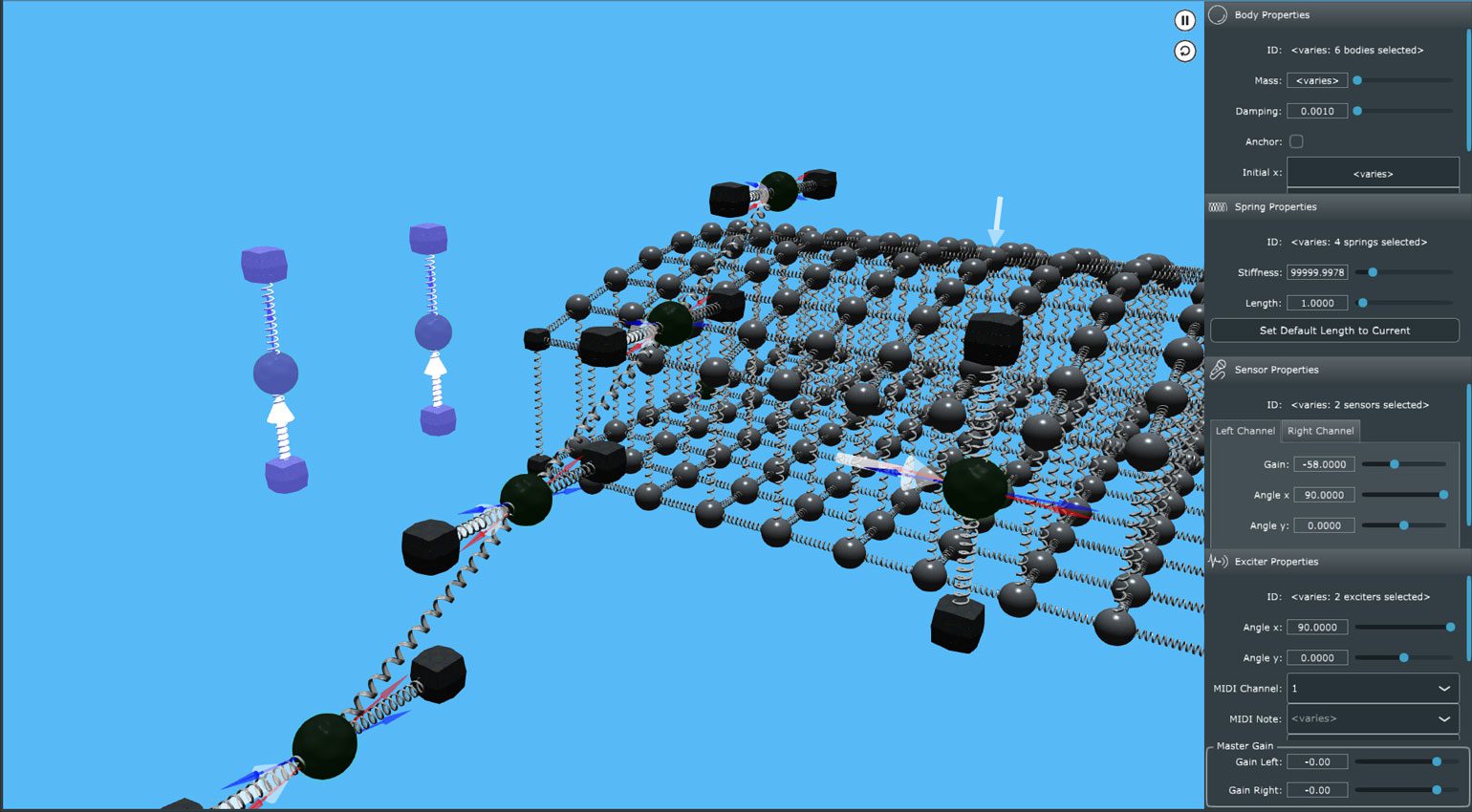REQ: Anukari 3D Physics Synthesizer

Anukari is a software synthesizer and effects processor based on a fully interactive 3D physics simulation. Drag and drop physics components like masses and springs to design your own 3D instrument or effect.
Radically New MIDI Instrument
Use Anukari's 3D physics playground to create instruments you've only been able to imagine until now. Create a 3D instrument made from masses and springs, and then use your MIDI keyboard to trigger mallets, plectrums, bows, and traditional oscillators. Hook up virtual microphones to pick up the sound the 3D instrument makes. You can keep it simple, or build sprawling systems of hundreds of masses.
Powerful Effects Processor
Anukari can accept audio input signals, either as a sidechain input alongside MIDI or as the primary input. Create 3D audio signal inputs and connect them to the parts of the physics system you want to vibrate, and then pick up the resulting sounds with virtual microphones. Throw in a couple dozen delay lines for reverb or feedback effects. And heck, why not use some LFOs to modulate the spring stiffness? Whatever you can dream up, you can build.
Full MPE Support
Works with both "legacy" MIDI and Midi Polyphonic Expression (MPE), so you can use a regular MIDI keyboard or your Linnstrument, Roli Seaboard, Haken Continuum, or other favorite MPE controller with Anukari. All MPE inputs can be custom-mapped to modulate arbitrary physics parameters, or left alone with their satisfying defaults so you can just play.
Modulate All the Things
In addition to the basic physics objects, there are a ton of options for modulation. Powerful sample-accurate LFOs which can operate all the way up to audio frequency for FM. MIDI-triggered envelopes. Envelope followers. And of course, every MIDI control source, as well as DAW automation parameters. The modulation matrix is simple to understand: it's displayed via physical connections in the 3D world. And nearly every parameter can be modulated.
Unleash the Power of Your GPU
Anukari processes audio on your graphics card (GPU), so massive compute power is available to you, leaving your CPU power available for other plugins. Want to hear what 500 detuned oscillators on a single voice sounds like? Go ahead. Need a couple hundred LFOs for some crazy experimental glitch instrument? No problem. Create hundreds of plectrums. Because you can. What other reason could you possibly need?
Plugin and Standalone Mode
You can run Anukari in your favorite DAW on Windows or MacOS as a VST3, AU, or AAX plugin, or run it in standalone mode to play it as a MIDI instrument without the complexity of a DAW. Anukari only uses a fraction of your GPU's resources, so you can easily run multiple instances of the plugin in your DAW, perhaps using it both as a synthesizer and as an effects processor. The possibilities are endless.
Tactile Real-Time 3D Interface
Anukari isn't just another stylized faceplate covered in knobs. You create the instrument's physics layout in an intuitive 3D editor (kind of like a video game), and then see how it vibrates, flexes, spins, and moves in real-time as you play it. Drag and release a mass with the mouse to hear what it does! Or project fully-customizable 3D visuals during a show so the audience can see the 3D instrument that they're listening to while you play it.
Unbelievable Reverbs
Run external audio sources through any shape of spring system you can think of. Tune the parameters to get dark industrial caverns or crashing plates. Modulate the physics parameters with an LFO to get swirling reverb, and add delay lines for slapback or feedback effects. Or push up the gain until the 3D system is bent way out of shape and distorts in unexpected ways.
Bizarre Glitches and SFX
With a full 3D physics simulation, you can build some pretty weird stuff. Try a loose chain of masses tied down only at one end, struck by three mallets in different directions, and watch it spin wildly out of control. Push the physics past their limits and see how things explode. Create a loose tangled mass of springs and excite it with white noise. What will happen? Who knows. Find out!
